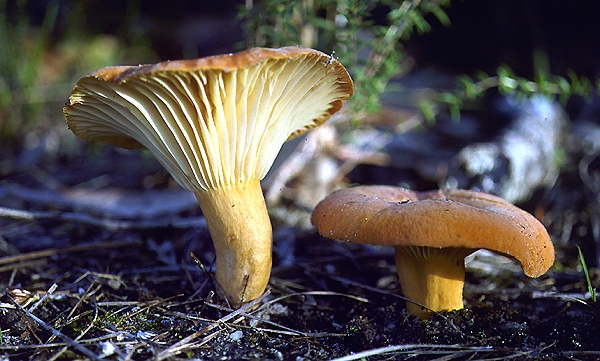
Lactarius clarkeae Cleland

Common name: None.
Description: The caps are 610 (12) cm in diameter; the cap surface is orange-brown to pale orange or salmon-orange, smooth (but finely felty on close examination), dry and convex becoming funnel-shaped. The caps may become somewhat irregular or distorted, and the margins are usually in-rolled when young. The gills are adnate to subdecurrent (run down the stem a very short distance), moderately close to somewhat distant and are white to cream-coloured; they occasionally show forking especially near the cap margins or the stem. The stem is usually up to 4 cm long and 12 cm thick; its surface is dry and similarly coloured to the cap. It is solid and may be slightly tapered downwards. All parts of the fungus bleed a white, milky fluid (latex) when damaged. The taste is mild.
The spores measure 810.5 × 68 µm and are broadly ellipsoidal with a decoration of warts over the surface, and are colourless; the wart decorations are sometimes joined by small ridges into a tiny network. The spore print is white.
Substratum: Lactarius clarkeae appears on soil among litter, mainly in eucalypt forests.
Distribution: Known from Queensland, New South Wales, Victoria, Tasmania and Western Australia.
Notes: This species is quite common and is easily recognised by its orange colour and the presence of white latex. A very similar species, Russula cheelii, has very widely spaced gills and does not produce latex. At least some species of Russula and Lactarius are used as food by rainforest reptiles such as the giant skinks or land mullets of subtropical rainforests in northern New South Wales and south-eastern Queensland. Numerous instances of these lizards eating considerable quantities of these fungi, particularly species of Russula, have been documented.
